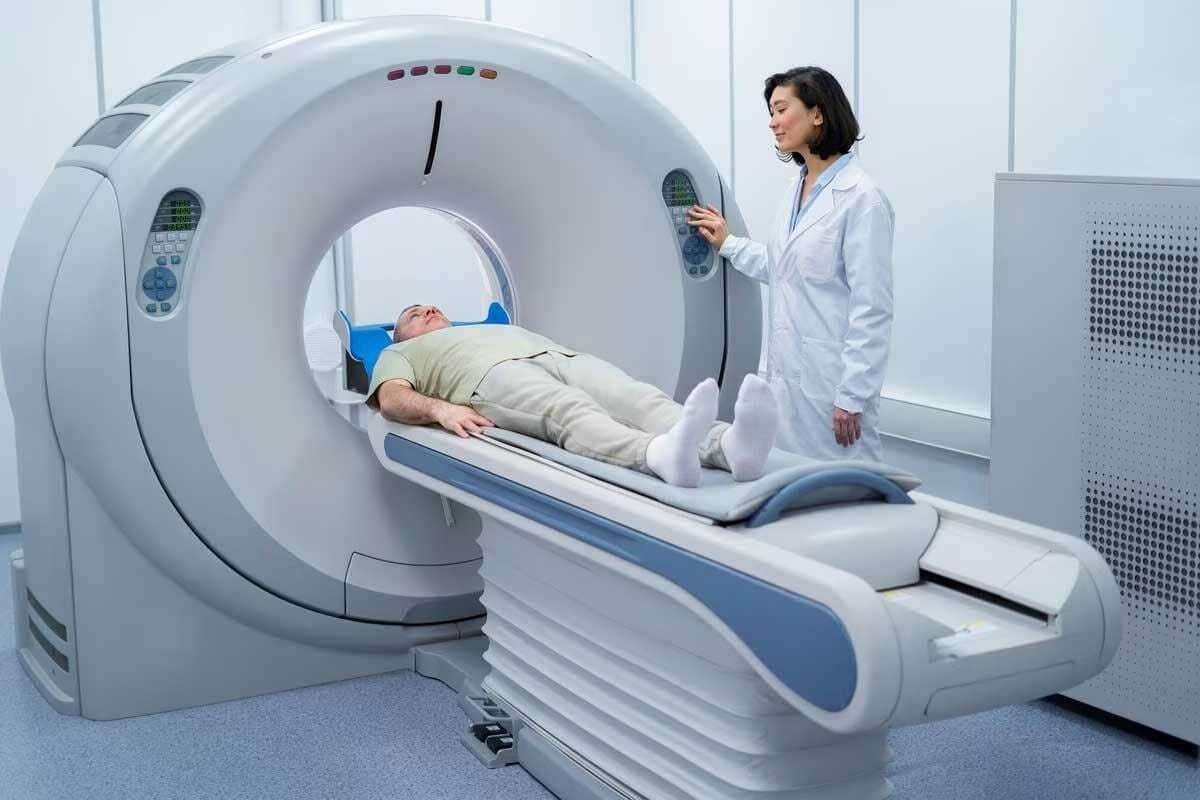Last Updated on November 26, 2025 by Bilal Hasdemir

Patients with a brain aneurysm need top-notch care that focuses on safety and recovery. Fixing a bulging blood vessel wall is a delicate task. It requires a team of skilled experts.
The main aim of a brain aneurysm operation is to stop the aneurysm from bursting. This is why surgery is so important in treating this condition.
Key Takeaways
- Advanced, compassionate care is key for brain aneurysm patients.
- Surgery is vital to prevent rupture and improve outcomes.
- Liv Hospital’s team excels in surgical procedures.
- Quick surgery or endovascular treatment is needed for ruptured aneurysms.
- The main goal is to stop bleeding and aid in recovery.
Understanding Brain Aneurysms

It’s important to know about brain aneurysms to understand the risks and how to prevent them. A brain aneurysm is a bulge in a blood vessel in the brain. It can rupture, causing serious health problems.
What Is a Brain Aneurysm?
A brain aneurysm happens when a blood vessel in the brain weakens. This causes it to bulge or balloon out. If it ruptures, it can lead to bleeding in the brain, known as a subarachnoid hemorrhage.
Types of Brain Aneurysms:
- Saccular aneurysms: These are the most common type and are often referred to as berry aneurysms.
- Fusiform aneurysms: These aneurysms are characterized by a uniform dilation of the blood vessel.
- Dissecting aneurysms: These occur when there is a tear in the inner layer of the blood vessel wall.
Risk Factors and Causes
Several factors can increase the risk of developing a brain aneurysm. These include:
| Risk Factor | Description |
| Genetics | Family history of aneurysms can increase an individual’s risk. |
| Smoking | Smoking is a significant risk factor as it damages blood vessel walls. |
| High Blood Pressure | Hypertension can weaken blood vessels, making them more susceptible to aneurysm formation. |
“The presence of certain genetic conditions, such as polycystic kidney disease, can significantly increase the risk of developing brain aneurysms.” –
Johns Hopkins Medicine
Signs and Symptoms of Rupture
An unruptured aneurysm may not cause symptoms unless it leaks or ruptures. When a rupture occurs, symptoms can include:
- Severe headache, often described as “the worst headache of my life”
- Double vision or other visual disturbances
- Nausea and vomiting
- Seizures
Recognizing these symptoms is critical for prompt medical intervention. According to Johns Hopkins Medicine, an unruptured aneurysm may not cause symptoms unless it leaks or ruptures. This can lead to severe headache, double vision, or eye pain.
Diagnosis and Assessment Methods

Diagnosing brain aneurysms requires a detailed approach. It uses various imaging methods to spot and check these serious conditions.
Advanced Imaging Techniques
Advanced imaging is key in finding brain aneurysms. Computed Tomography (CT) scans, Magnetic Resonance Imaging (MRI), and cerebral angiography help see the aneurysm.
The right imaging method depends on the aneurysm’s location and size, and the patient’s health. CT scans are quick and good for emergencies. MRI gives detailed views of soft brain tissues, helping spot small aneurysms.
Aneurysm Classification Systems
Brain aneurysms are sorted by size, location, and shape. Knowing these types helps pick the best treatment. The size of an aneurysm is key, as bigger ones are more likely to burst.
- Small aneurysms (<7mm) are often watched closely.
- Medium aneurysms (7-12mm) might get surgery or coiling.
- Large aneurysms (13-24mm) and giant ones (>24mm) need more complex treatments.
Rupture Risk Assessment
Figuring out the risk of an aneurysm bursting is very important. Size, location, and patient details like age and smoking are looked at. The PHASES score helps guess the risk of bursting, guiding treatment choices.
Using advanced imaging, aneurysm types, and risk checks helps doctors fully understand each patient. This leads to better treatment plans and outcomes.
Types of Brain Aneurysm Procedures
Brain aneurysm treatment varies for each patient. The right brain aneurysm procedure depends on the aneurysm’s location, size, and the patient’s health.
At Johns Hopkins Medicine, surgical clipping and endovascular coiling are main treatments. Flow diversion is also an option. Each method is chosen based on the aneurysm and patient factors.
Surgical Clipping Approach
Surgical clipping requires a craniotomy to reach the aneurysm. A clip is then placed to block the aneurysm from blood flow. It’s effective for some aneurysms, mainly those that are easy to get to.
Endovascular Coiling Technique
Endovascular coiling is a less invasive method. Coils are inserted through a catheter to clot the aneurysm. It’s good for hard-to-reach aneurysms or those not suited for surgery.
Flow Diversion Devices
Flow diversion uses a device to change blood flow, causing the aneurysm to clot. It’s for complex aneurysms that can’t be treated by clipping or coiling.
| Procedure | Description | Indications |
| Surgical Clipping | Involves clipping the aneurysm neck | Accessible aneurysms, certain sizes and locations |
| Endovascular Coiling | Coils deployed to promote clotting | Difficult to access aneurysms, patient-specific factors |
| Flow Diversion | Devices alter blood flow to promote thrombosis | Complex aneurysms not suitable for clipping or coiling |
Emerging Interventional Methods
New brain aneurysm procedures are being developed. These aim to improve results, shorten recovery times, and offer more options for complex cases.
Choosing a procedure is very personal, showing how complex brain aneurysm treatment is. A team of experts is key in picking the best treatment for each patient.
Patient Selection for Different Surgical Approaches
Choosing the right patients for brain aneurysm surgery is complex. It requires careful thought. The decision to operate depends on many factors to find the best surgical approach.
Factors Influencing Treatment Decisions
Several factors affect the choice of surgery for brain aneurysms. These include the aneurysm’s size and location, the patient’s health, and any comorbidities.
Key factors include:
- Aneurysm size and location
- Patient’s age and overall health
- Presence of symptoms or rupture
- Comorbid conditions
Unruptured vs. Ruptured Aneurysm Management
Managing unruptured and ruptured aneurysms is different. Unruptured aneurysms are often watched or treated on purpose. Ruptured aneurysms need urgent care. The choice between clipping and coiling depends on the aneurysm and the patient’s health.
| Characteristics | Unruptured Aneurysm | Ruptured Aneurysm |
| Treatment Urgency | Elective | Emergency |
| Primary Treatment Options | Monitoring, Surgical Clipping, Endovascular Coiling | Surgical Clipping, Endovascular Coiling |
| Considerations | Aneurysm size, location, patient health | Immediate risk reduction, vasospasm prevention |
Contraindications for Specific Procedures
Some conditions make certain surgeries not suitable. For example, severe comorbidities might rule out open surgery. Complex aneurysm shapes might not work for endovascular coiling.
Deciding on brain aneurysm treatment is complex. It needs a deep look at each patient’s situation. Understanding these factors helps doctors make better choices for their patients.
Pre-Surgical Preparation Protocol
The pre-surgical phase is key in treating brain aneurysms. It includes steps to get the patient ready for surgery. This makes the surgery more likely to succeed.
Comprehensive Patient Evaluation
A detailed patient evaluation is the first step. It looks at the patient’s medical history and current health. Advanced imaging techniques like MRI and CT angiography are used to understand the aneurysm’s size and location.
The patient’s overall health is also checked. This includes any other health issues that might affect the surgery or recovery. This approach helps the surgical team plan the best strategy for each patient.
Anesthesia Considerations and Planning
Anesthesia planning is another important part. The anesthesiologist works with the surgical team to create a plan. They choose the right anesthetic agents and techniques for the patient’s comfort and safety.
Careful monitoring of the patient’s vital signs and brain function is done during the surgery. This helps spot and fix any problems quickly.
Surgical Team Preparation
The surgical team’s preparation is also critical. This includes neurosurgeons and the whole perioperative team. Rehearsal of the surgical plan and review of imaging studies are done to ensure everyone knows the details.
Good communication among team members is key. It helps the surgery go smoothly and according to plan.
Step-by-Step: Surgical Clipping Procedure
To treat brain aneurysms, neurosurgeons use the surgical clipping procedure. This method has been improved over many years. It involves several important steps, each needing great skill and precision.
Craniotomy Technique and Approach
The first step is a craniotomy. This is when a part of the skull is temporarily removed to get to the brain. The way the craniotomy is done is key to avoid hurting the brain and to see the aneurysm well.
Key Considerations for Craniotomy:
- Preoperative planning using advanced imaging techniques
- Choosing the best craniotomy site based on the aneurysm’s location
- Removing bone carefully to avoid damage to structures below
Microsurgical Dissection and Aneurysm Exposure
After the craniotomy, microsurgical dissection is done to find the aneurysm. This careful process involves moving through brain tissue to get to the aneurysm. Special tools and techniques are used.
The goal of microsurgical dissection is to see the aneurysm and the blood vessels around it clearly.
Clip Selection and Placement Strategy
Choosing and placing the clip are very important steps. The clip must match the size and shape of the aneurysm’s neck perfectly.
| Clip Type | Aneurysm Size | Neck Characteristics |
| Straight Clip | Small | Narrow Neck |
| Curved Clip | Medium | Wide Neck |
| Fenestrated Clip | Large | Complex Neck Anatomy |
Intraoperative Assessment and Closure
After the clip is placed, the surgeon checks to make sure the aneurysm is closed off. They might use imaging like intraoperative angiography to check for any problems.
Key Steps for Intraoperative Assessment:
- Checking if the aneurysm is closed off
- Looking at the blood vessels around it
- Closing the craniotomy site
The surgical clipping procedure is very complex. It needs a lot of skill and knowledge. By knowing the steps, neurosurgeons can help patients with brain aneurysms get better.
Step-by-Step: Endovascular Coiling Procedure
Endovascular coiling is a modern way to fix aneurysms in the brain. It’s less invasive than traditional surgery. A catheter is guided through blood vessels to the aneurysm. There, coils are placed to stop bleeding and promote clotting.
Vascular Access and Catheter Navigation
The first step is getting vascular access. This is done through the femoral artery in the groin. A small cut is made to insert a catheter. Advanced imaging techniques help guide the catheter to the brain.
Once at the aneurysm, a microcatheter is used. Real-time imaging helps place it correctly in the aneurysm sac.
Digital Subtraction Angiography Mapping
Digital Subtraction Angiography (DSA) is key in this procedure. It gives clear images of the blood vessels and the aneurysm. This helps map and assess the aneurysm’s size, shape, and location.
Coil Selection and Deployment Technique
Coil selection depends on the aneurysm’s size and shape. The coils help stop bleeding by promoting clotting. They are released through a microcatheter into the aneurysm sac.
- Coils are made of various materials, including platinum and other biocompatible metals.
- The number and size of coils used depend on the aneurysm’s characteristics.
- Coil deployment is monitored in real-time using DSA to ensure accurate placement.
| Aneurysm Size | Coil Type | Number of Coils |
| Small (<5mm) | Soft Coils | 1-2 |
| Medium (5-10mm) | Standard Coils | 2-4 |
| Large (>10mm) | Complex Coils | 4 or more |
Angiographic Assessment and Completion
After deploying the coils, DSA is used to check if the aneurysm is closed. This step is vital to confirm the procedure’s success and spot any issues.
The procedure is finished when the aneurysm is closed and there are no complications. The catheter is then removed, and the access site is closed.
Emergency Brain Aneurysm Procedures for Ruptured Cases
Emergency brain aneurysm procedures are key for managing ruptured cases. They help improve patient outcomes. A ruptured aneurysm causes a subarachnoid hemorrhage, a life-threatening condition needing quick medical help.
Initial Stabilization Protocols
The first step in managing a ruptured brain aneurysm is to stabilize the patient. This prevents further brain damage. The steps include:
- Maintaining airway patency and ensuring adequate oxygenation
- Controlling blood pressure to prevent re-rupture
- Administering anticonvulsants to prevent seizures
- Implementing measures to reduce intracranial pressure (ICP)
Managing Increased Intracranial Pressure
Increased ICP is a common issue after an aneurysm ruptures. To manage it, doctors use:
- Administering osmotic diuretics like mannitol
- Implementing hyperventilation to reduce PaCO2 levels
- Ensuring proper drainage of cerebrospinal fluid through ventriculostomy
Urgent Surgical Decision-Making
Deciding on surgery depends on several factors. These include the patient’s condition, aneurysm location, and complications like hydrocephalus or hematoma. A team makes this decision, weighing the risks and benefits of immediate surgery versus waiting.
Vasospasm Prevention and Treatment
Cerebral vasospasm is a major complication after an aneurysm rupture. It can cause delayed brain ischemia. To prevent and treat it, doctors use:
- Administering nimodipine to prevent vasospasm
- Maintaining euvolemia and avoiding hypovolemia
- Using intra-arterial vasodilators or angioplasty for severe vasospasm
Managing ruptured brain aneurysms requires a detailed approach. This includes initial stabilization, managing complications, and timely surgery. Understanding these emergency procedures helps healthcare providers improve outcomes for these critically ill patients.
The Brain Aneurysm Procedure: Multidisciplinary Team Approach
Treating brain aneurysms needs a team effort from many medical experts. A multidisciplinary team makes sure all patient care needs are met. This includes diagnosis, treatment, and recovery.
Neurosurgical Team Composition
The neurosurgical team leads in treating brain aneurysms. They have skilled neurosurgeons who do surgeries and other treatments. For more on brain aneurysm surgery, check out Brigham and Women’s Hospital.
| Role | Description |
| Neurosurgeons | Perform surgical clipping and other operative techniques. |
| Nurses and Surgical Technicians | Assist during surgery and provide patient care. |
Role of Interventional Neuroradiologists
Interventional neuroradiologists are key in treating brain aneurysms with endovascular methods. They use advanced imaging to guide procedures like coiling and flow diversion.
Endovascular techniques have changed how brain aneurysms are treated. They offer patients less invasive options than traditional surgery.
Neuroanesthesia Considerations
Neuroanesthesia focuses on anesthesia for neurological surgery patients. Neuroanesthesiologists work with the neurosurgical team. They ensure patient safety and comfort during surgery.
- Monitoring patient’s vital signs during surgery.
- Managing anesthesia to prevent brain injury.
- Ensuring rapid recovery post-surgery.
Intraoperative Neurophysiological Monitoring
Intraoperative neurophysiological monitoring (IONM) is vital during brain aneurysm surgery. It uses techniques to watch the nervous system in real-time. This helps avoid neurological damage.
The success of treating brain aneurysms depends on teamwork. A multidisciplinary team combines neurosurgeons, interventional neuroradiologists, neuroanesthesiologists, and more. This team approach gives patients the best care, leading to better outcomes.
Conclusion: Outcomes and Advances in Brain Aneurysm Treatment
Brain aneurysm treatment has seen big improvements, leading to better results for patients. New imaging and surgical tools have made fixing cerebral aneurysms more successful. This has lowered the chance of rupture and improved recovery chances.
Doctors now treat brain aneurysms in a more tailored way. Thanks to endovascular coiling and surgical clipping, patients face fewer complications and heal faster.
As technology keeps getting better, brain aneurysm treatment will likely get even more effective. New treatments and methods will help more people, giving hope to those dealing with this condition.
FAQ
What is a brain aneurysm?
A brain aneurysm is a weak spot on an artery in the brain. It balloons out and fills with blood. This can lead to rupture and bleeding.
What are the risk factors for developing a brain aneurysm?
Risk factors include genetics, high blood pressure, smoking, and certain medical conditions. Polycystic kidney disease is one example.
How is a brain aneurysm diagnosed?
Diagnosis uses advanced imaging like CT angiography, MRI, or digital subtraction angiography.
What are the different types of brain aneurysm procedures?
Procedures include surgical clipping, endovascular coiling, flow diversion, and other emerging methods.
How do doctors determine the best treatment approach for a brain aneurysm?
Treatment decisions depend on aneurysm size, location, and rupture risk. Patient health and medical history also play a role.
What is the difference between managing unruptured and ruptured aneurysms?
Unruptured aneurysms are treated electively. Ruptured aneurysms need emergency intervention to prevent further bleeding.
What is involved in preparing for brain aneurysm surgery?
Preparation includes a thorough patient evaluation, anesthesia planning, and surgical team preparation. This ensures a safe and successful procedure.
How is surgical clipping performed?
Surgical clipping involves a craniotomy and microsurgical dissection. A clip is placed to occlude the aneurysm. Intraoperative assessment and closure follow.
What is the endovascular coiling procedure?
Endovascular coiling involves vascular access and catheter navigation. Coils are deployed to treat the aneurysm. Angiographic assessment follows.
What is the role of a multidisciplinary team in brain aneurysm surgery?
A multidisciplinary team, including neurosurgeons and interventional neuroradiologists, ensures optimal patient care and outcomes.
What are the benefits of flow diversion devices in treating brain aneurysms?
Flow diversion devices treat complex aneurysms by diverting blood flow. This promotes thrombosis and healing.
How do doctors manage vasospasm after a ruptured brain aneurysm?
Vasospasm is managed with medications, angioplasty, and other interventions. This prevents or treats the complication.
What is intracranial aneurysm repair?
Intracranial aneurysm repair treats aneurysms within the brain. Surgical or endovascular techniques are often used.
How is cerebral aneurysm repair performed?
Cerebral aneurysm repair uses techniques like clipping, coiling, or flow diversion. These methods treat the aneurysm and prevent rupture or re-rupture.
What is the aneurysm operation brain procedure?
The aneurysm operation brain procedure involves surgical interventions like clipping or coiling. These are used to treat brain aneurysms.
How do you fix a brain aneurysm?
Fixing a brain aneurysm involves various techniques. These include clipping, coiling, or flow diversion. They treat the aneurysm and prevent rupture or re-rupture.
References
- Molyneux, A., Kerr, R., Stratton, I., Sandercock, P., Clarke, M., Shrimpton, M., & International Subarachnoid Aneurysm Trial (ISAT) Collaborative Group. (2002). International subarachnoid aneurysm trial (ISAT) of neurosurgical clipping versus endovascular coiling in 2143 patients with ruptured intracranial aneurysms: A randomised trial. The Lancet, 360(9342), 1267–1274. https://www.sciencedirect.com/science/article/pii/S0140673602113146






